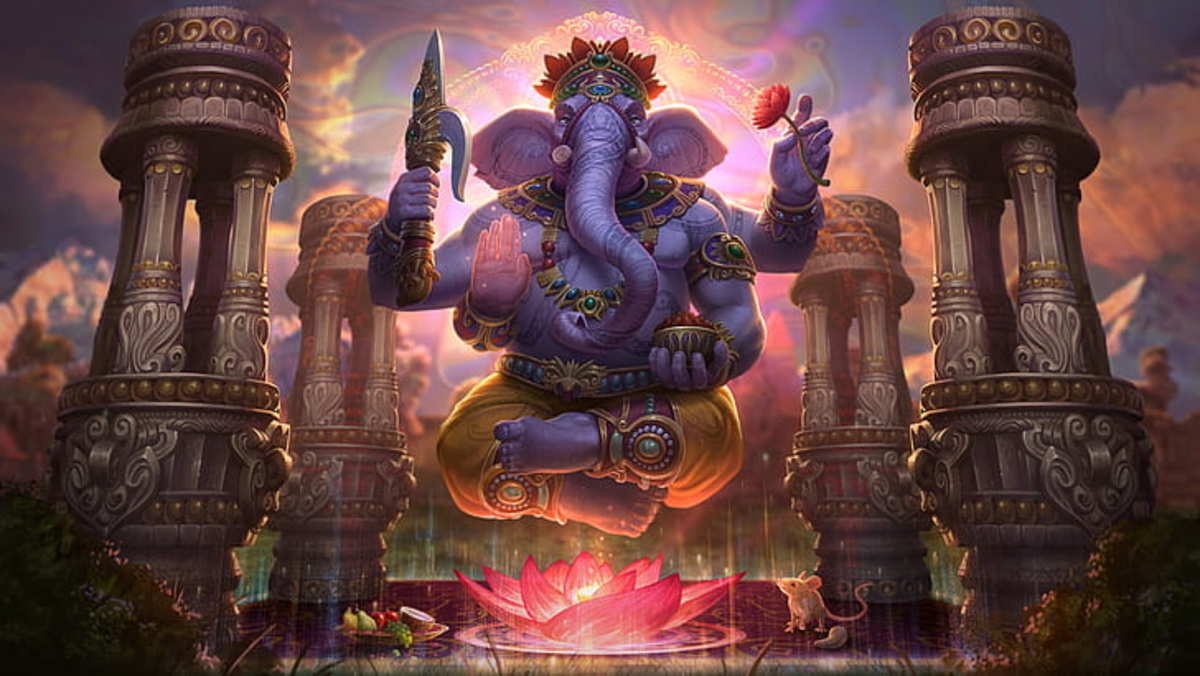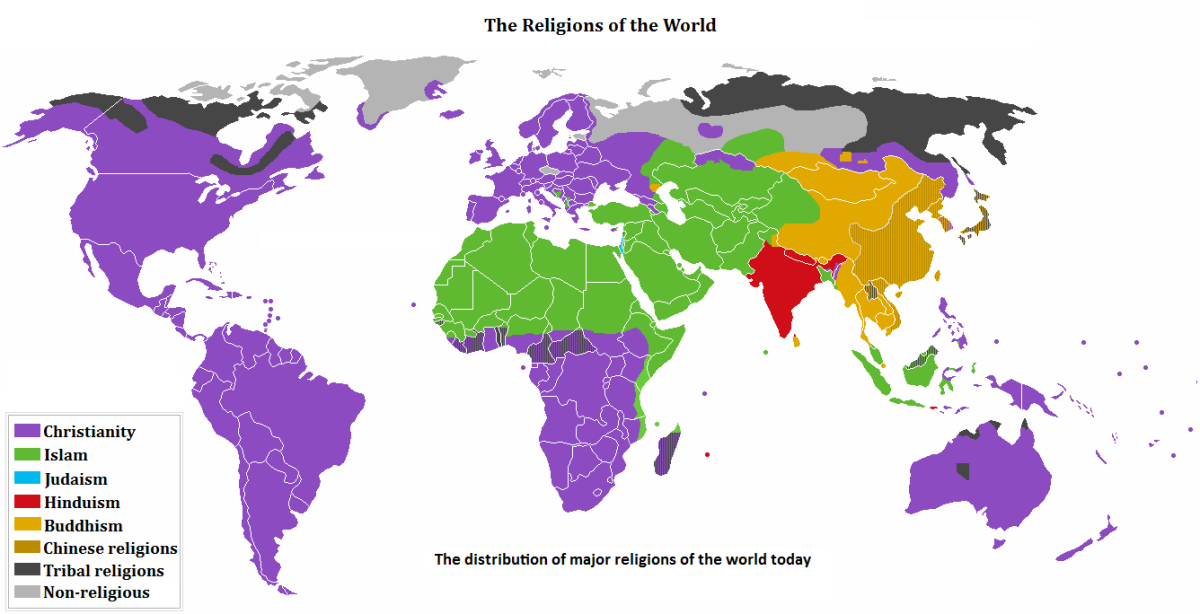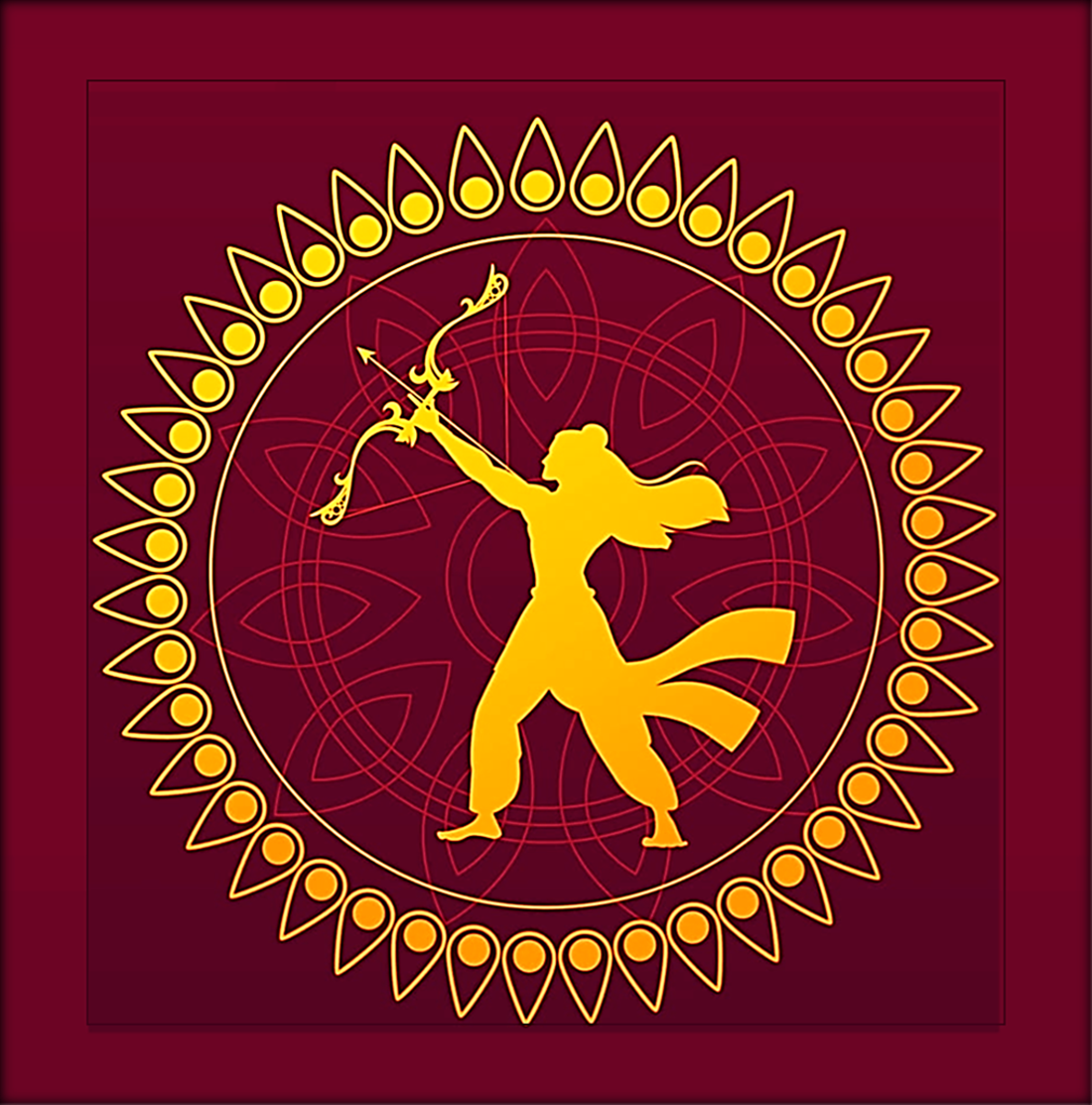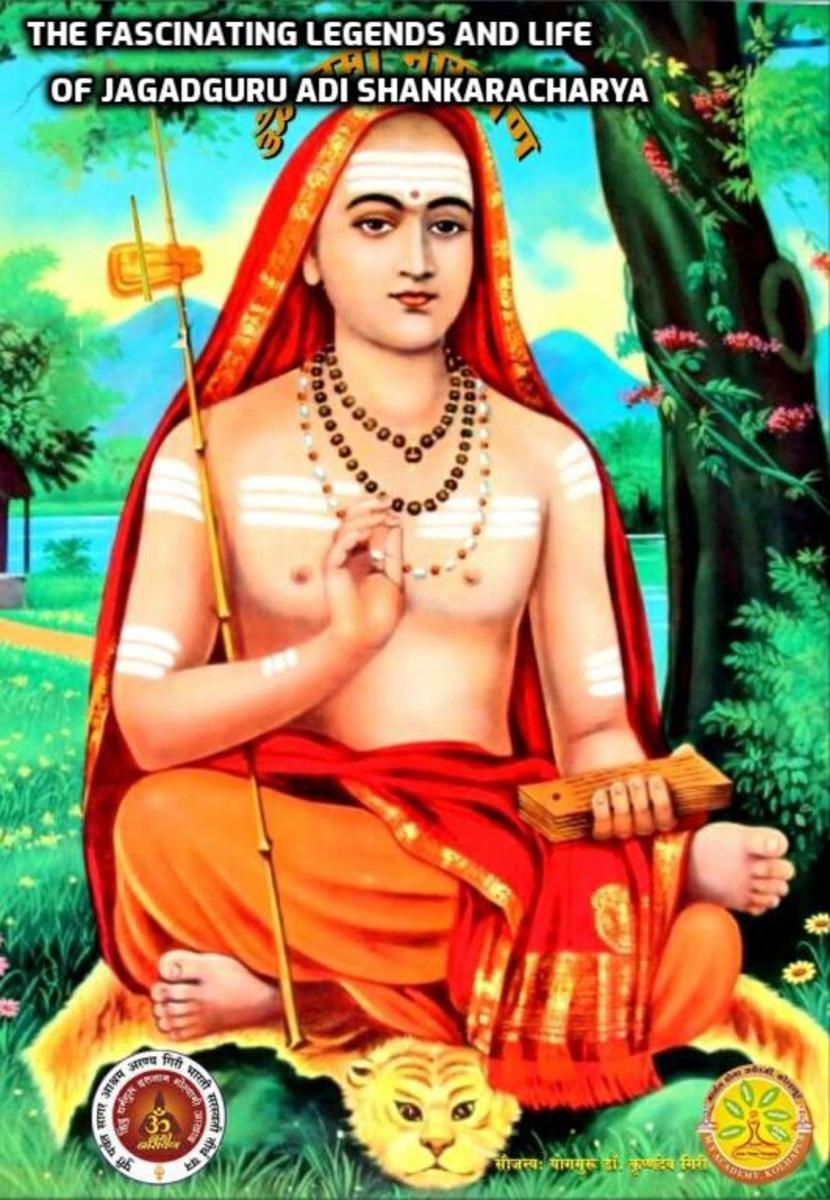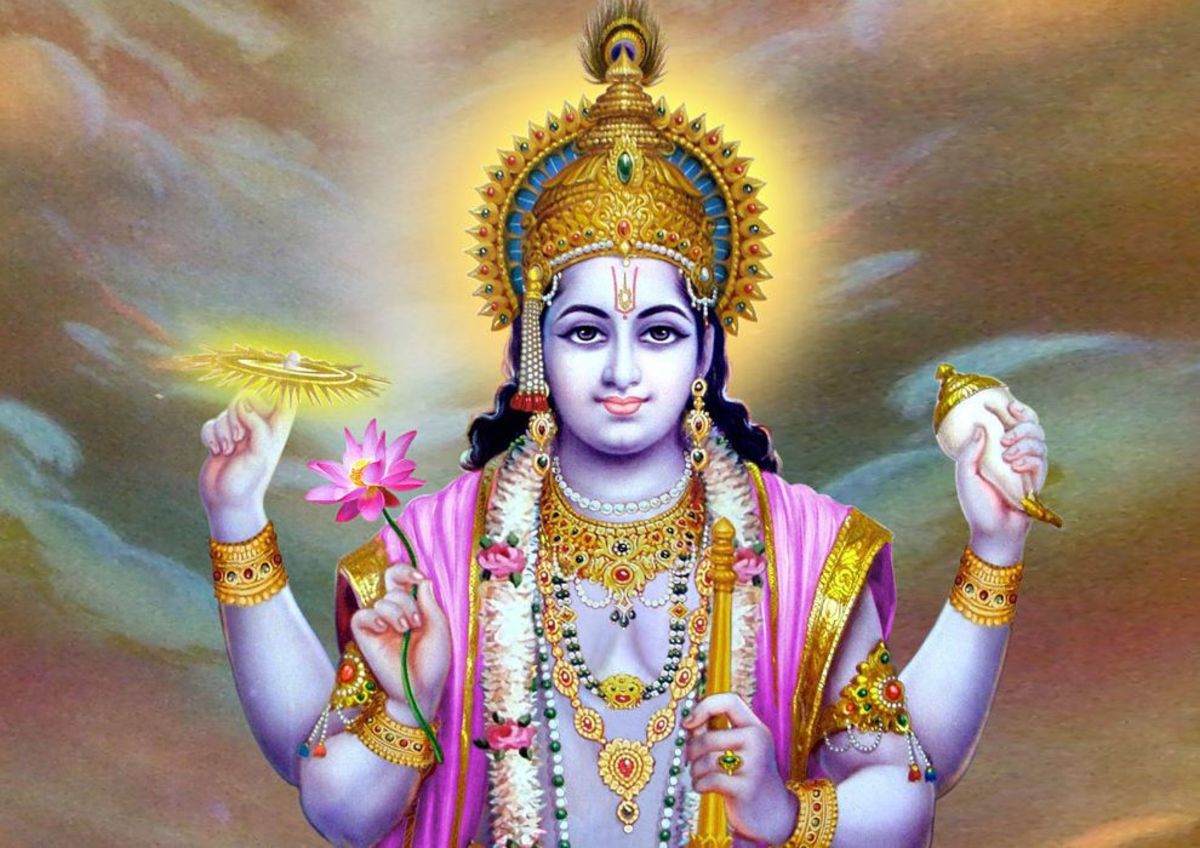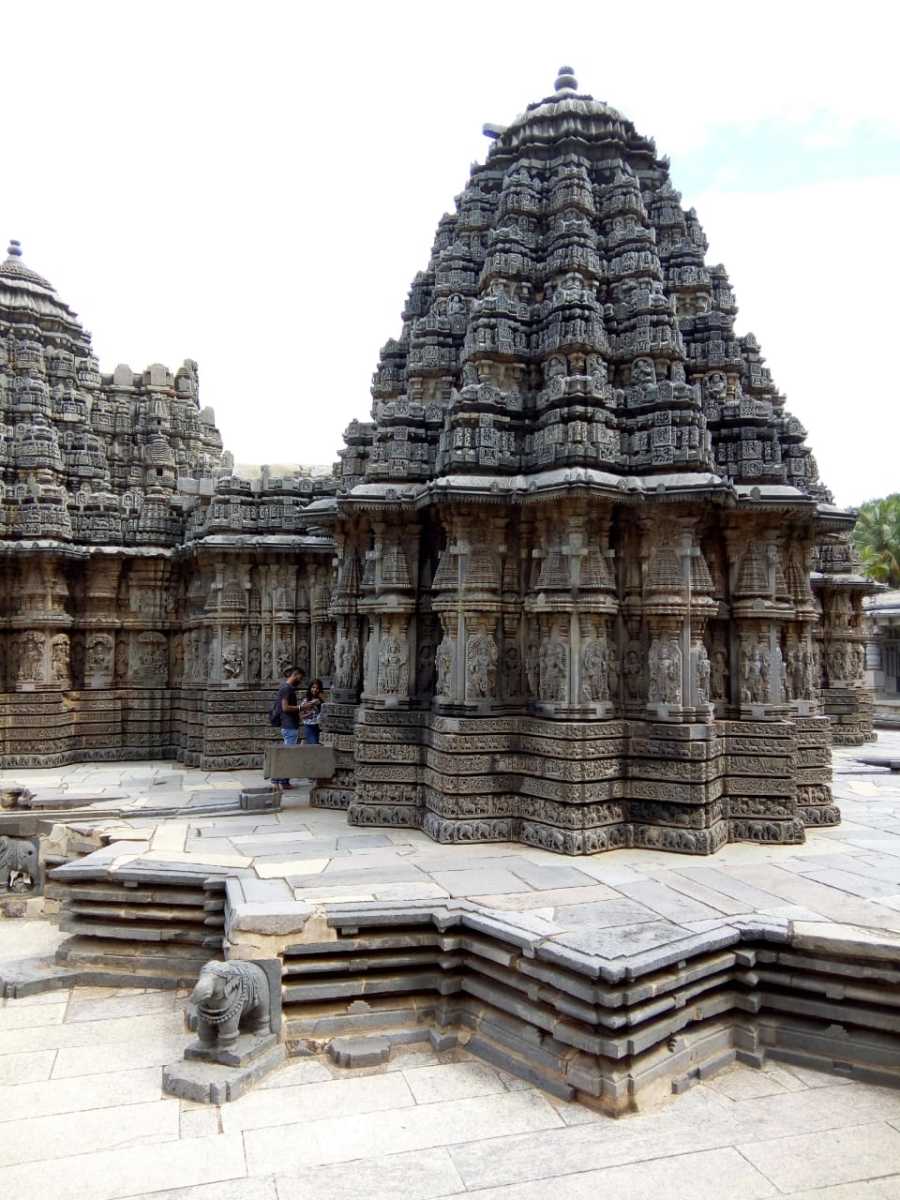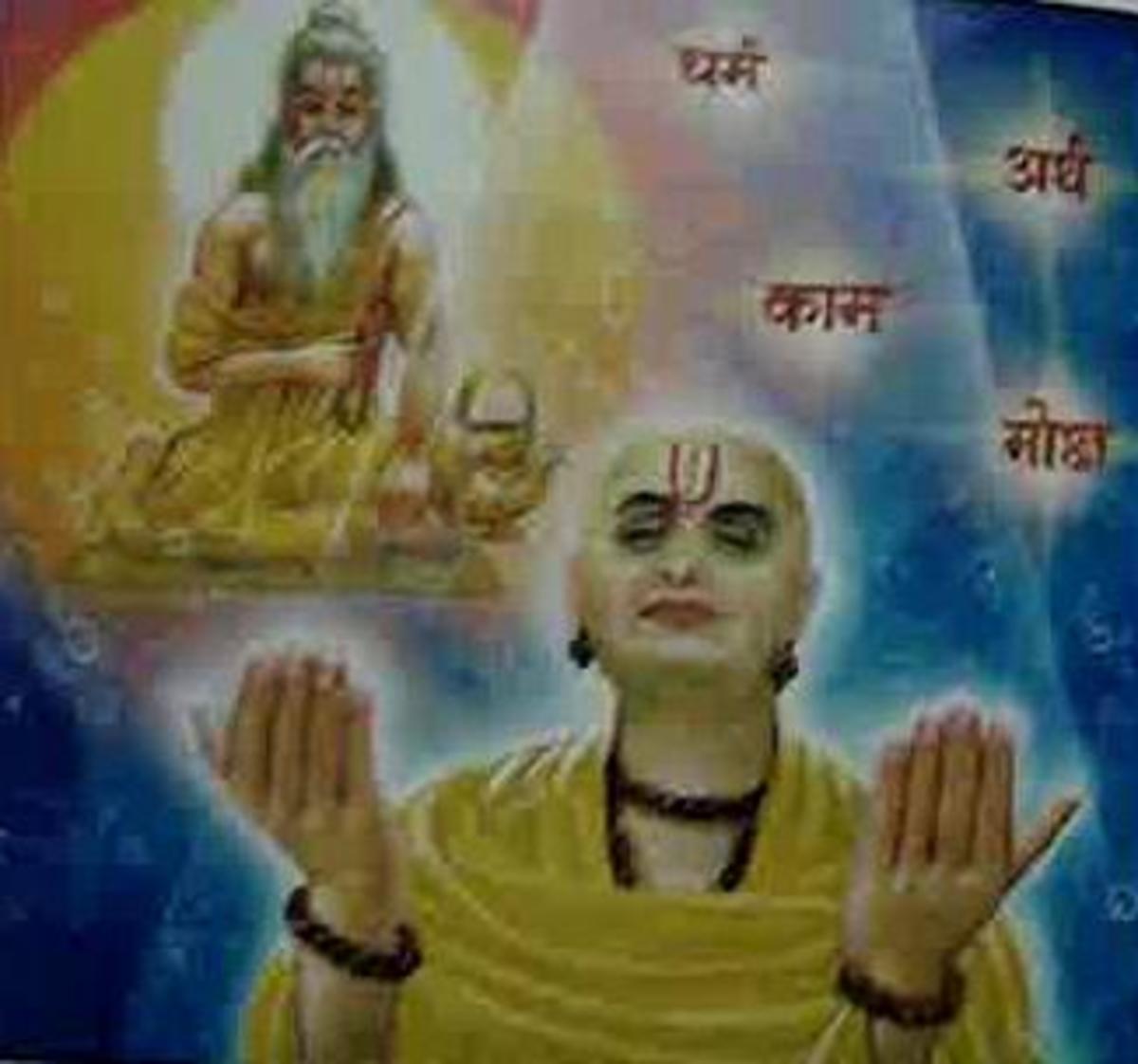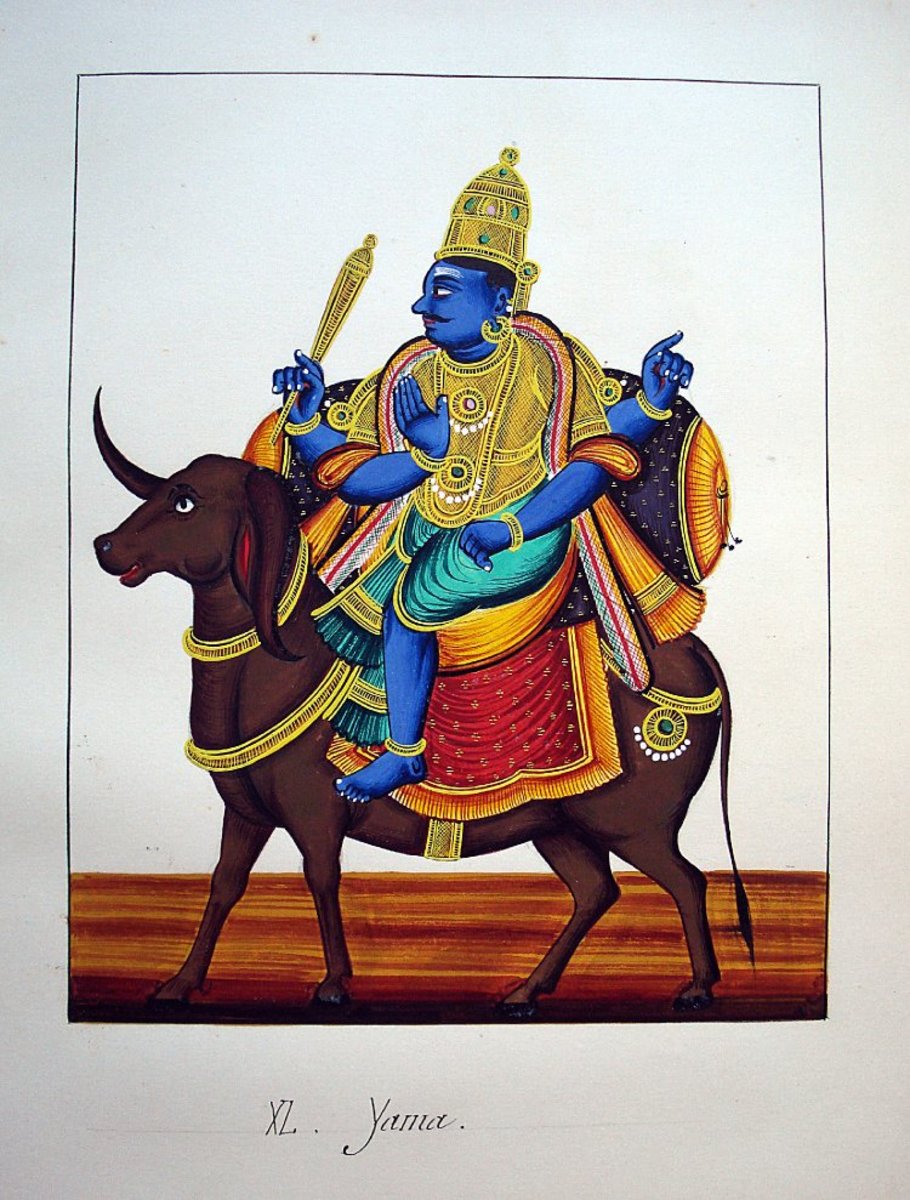World Religions: Hinduism
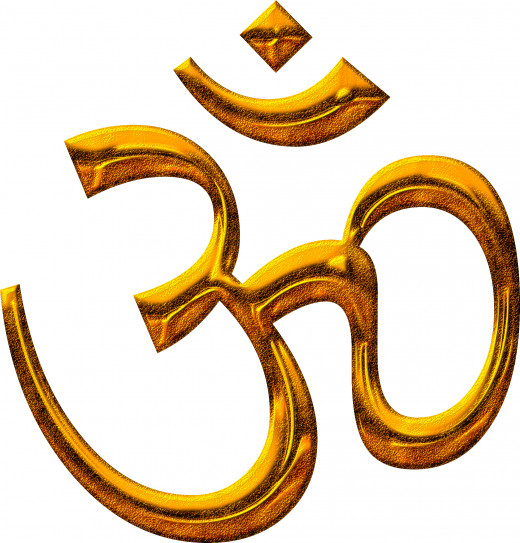
The word Hindu comes from the Persian word sindhu, which means 'river'. It refers to the religion of the people who lived by the river Indus around 2500BC. This ancient civilization was centered around the cities of Mohenjo-Daro and Harappa (in modern-day Pakistan). Over the centuries, the religion spread across northern India to the valley of the Ganges River.
In the 900s BC, the Hindu scriptures were written down. Two thousand years later Indian rulers took Hinduism to Sri Lanka and Southeast Asia. Today, it is practised around the world. There are more than 800 million Hindus, 700 million of whom live in India.
Hinduism does not have one central belief. It has evolved slowly over time, drawing in ideas from other religions. There are many different types of Hinduism and many different ways to be a Hindu.
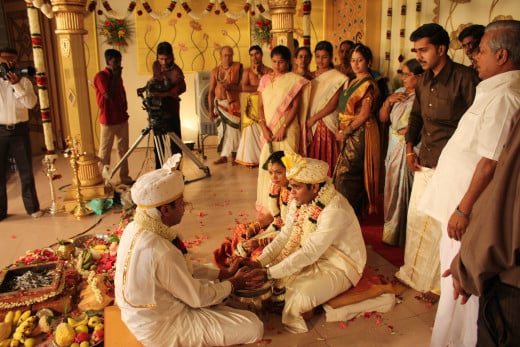
Most Hindus believe that they have four aims in life. The first, dharma, is to live a good life by being kind to others and telling the truth. The second, artha, is to be wealthy and prosperous in life. Karma is to enjoy pleasure and mosksha is to be freed from the world and its desires.
Hindus also believe that they pass through four stages in life. These are being a student, then a householder, then a thinker and finally an ascetic (someone who is rid of all worldly pleasures). Not everyone achieves these four aims and stages, but if they do, they will be reincarnated into a better life. For Hindus, this eternal cycle of life, death and then rebirth into a new life is very important.
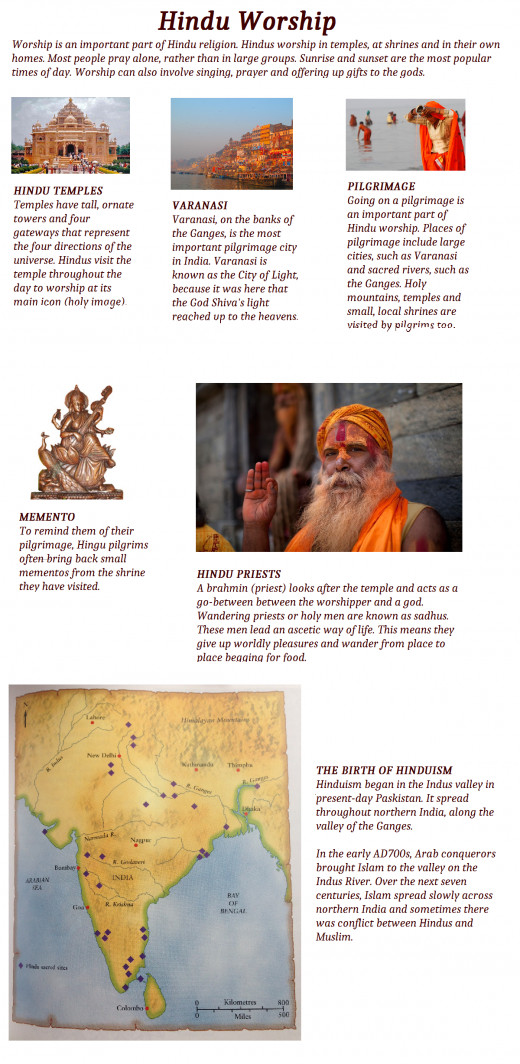

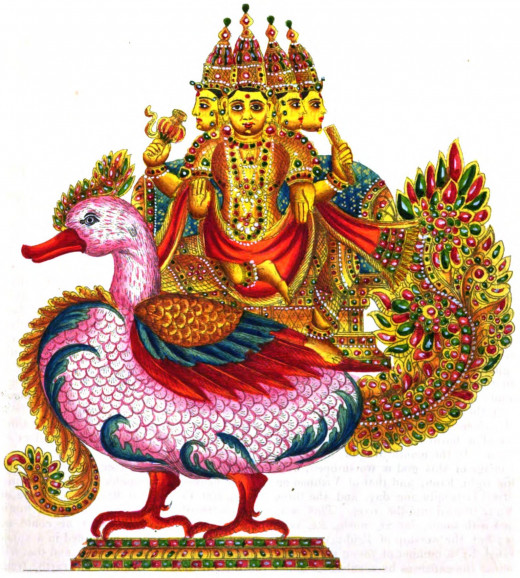
Hindus believe in one supreme, ultimate god, Brahman, an unseen but all-powerful force who can appear in numerous forms. Some of these forms are worshiped by all Hindus, while others are worshiped only in one place or by a few people. The most important gods are those who created the world and its life and who are powerful enough to destroy it. There are gods of fire and war and many lesser gods that represent the forces of the natural world, such as the Sun and the wind.
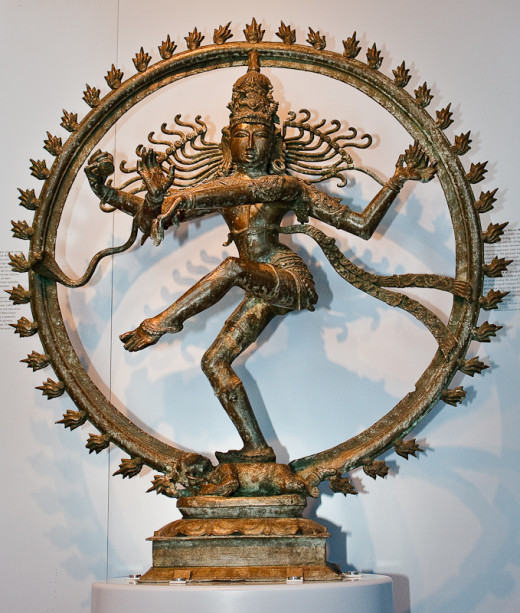
Brahman brought the entire universe into existence. However, he is impersonal and takes no recognized appearance for his worshipers. Hindus therefore think of him in a variety of different appearances and worship him that way. The most important way in which Brahman makes himself known is through the Timurti, a holy trio of three great gods. These are Brahma, Vishnu and Shiva.
According to Hindu belief, Brahma created the world, Vishnu preserves life and Shiva both destroys life and then recreates it. Brahma is not worshiped like other gods, because after he created the world he had finished his work. However, when the world ends and needs to be recreated, he will return to create the world all over again. At that time he will be worshiped again.
Vishnu is known as the one who takes many different forms. He is very important because preserves human life, the life of the world and the life of the universe itself. As a result, his different images are found in many temples and shrines.
The third god of the trio is Shiva. Like Vishnu, he has many different forms and he has over a thousand names, such as Maheshvara, the lord of knowledge, and Mahakala, the lord of time. He is often shown with three faces. Two of the faces have opposite characteristics, such as male and female, or peace and war. The third face is always calm, to reconcile the two opposites.
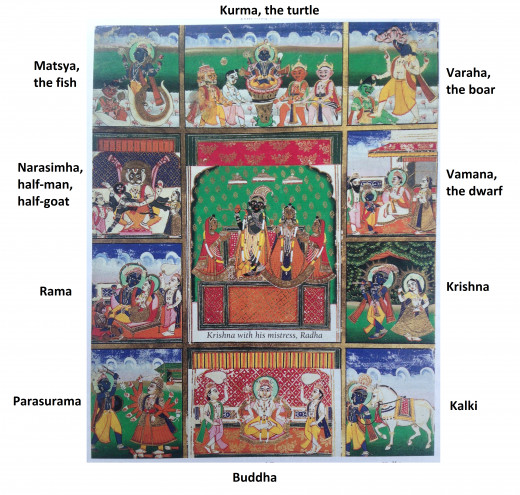
Ten Avatars of Vishnu
- Matsya, the fish, who saved the law-giver Manu during the Flood.
- Kurma, the turtle, who held the Earth on his back after the Flood.
- Varaha, the boar, who raised the land out of the water with his tusks.
- Narasimha, who destroyed the demon king, Hiranyakasipu.
- Vamana, the dwarf, who tricked Hiranyakasipu's evil nephew, Bali.
- Parasurama, who defeated an army of warriors with his axe.
- Rama, who killed King Ravana.
- Krishna, who told the Bhagavad Gita to Arjuna, his chariot driver.
- Buddha, who founded Buddhism.
- Kalki, who will appear at the end of the world on a white horse.
Vishnu is the god who preserves life, maintaining the balance between good and evil in the universe.
If evil seems about to take control, Vishnu comes down to earth to restore the balance. On Earth Vishnu takes the form of one of his ten incarnations, or avatars, the most important being Krishna.
Nine of these have visited the Earth already. The final one will arrive when the Earth is nearing the end of its current life. This tenth incarnation of Vishnu will destroy the world, then recreate it.
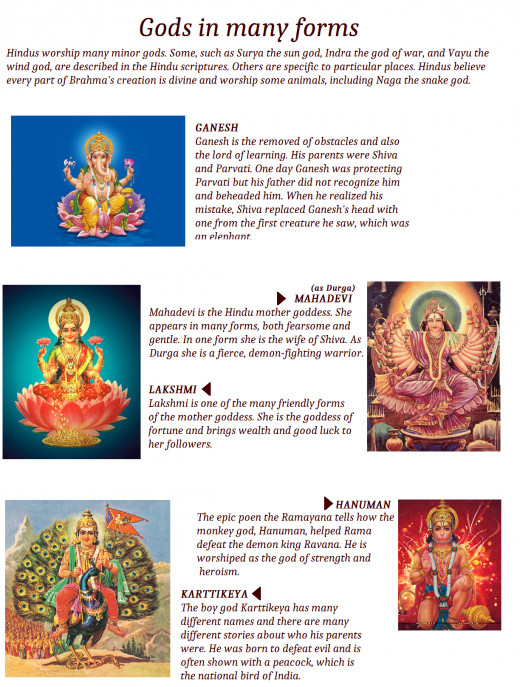

The Hindu religious books were written down in Sanskrit over the course of more than 1000 years. Hindus have many different types of scripture, which fall into three groups. The first group, the four Vedas, were originally passed down by word of mouth from generation to generation. Veda means 'knowledge'.
The Rig Veda was the first to be written down in about 1200 BC. It contains religious hymns. Next came the Sama Veda, which consists of chants for Hindus to sing as part of their worship, and the Yajur Veda, which contains words to be spoken by Hindu priests. The last one was written in about 900 BC. This is the Atharva Veda, which is full of magic spells and incantations.
Hindus believe the words of the Vedas are divine, so not a single word of them can be changed.
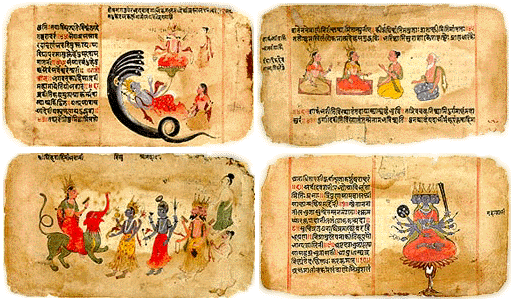
From around 700 BC, Hindus began to wonder about the meaning of life and other philosophical questions. Over the next 400 years, this gave rise to the second major group of religious books. The Upanishads (sitting near a teacher) answer such questions as where we come from and why we are here.
They explore the key concepts of Hinduism, such as reincarnation. They describe ordinary life as a cycle of birth, suffering, death and rebirth, and urge people to seek moksha (freedom from cycle of death and rebirth). The Aranyakas (forest books) deal with the meaning of rituals. The Puranas (ancient myths) contains stories of creation and the lives of the gods. As in the Vedas, the words in the Upanishads cannot be changed.
The final group of religious books are two epic poems. The first of these appeared in about 500 BC. The Mahabharata is the longest poem in the world, with more than 200,000 lines. It contains myths and philosophical discussions.At the heart of the book is the Bhagavad Gita (Song of the Lord), which is a conversation between Krishna, one of the avatars of Vishnu, and his chariot driver, Arjuna.
The second epic, the Ramayana, was written down in about 300 BC. It tells the story of Rama, another avatar of Vishnu, and how he rescued his wife, Sita, who had been kidnapped by the demon king, Ravana, king of Lanka.
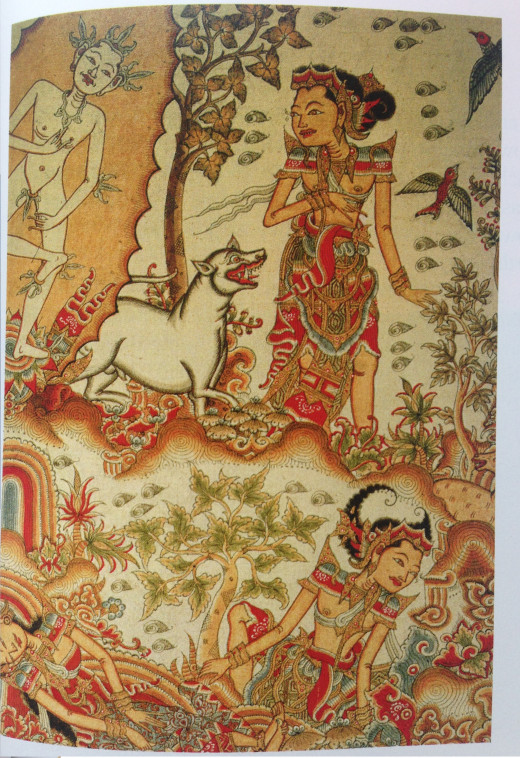
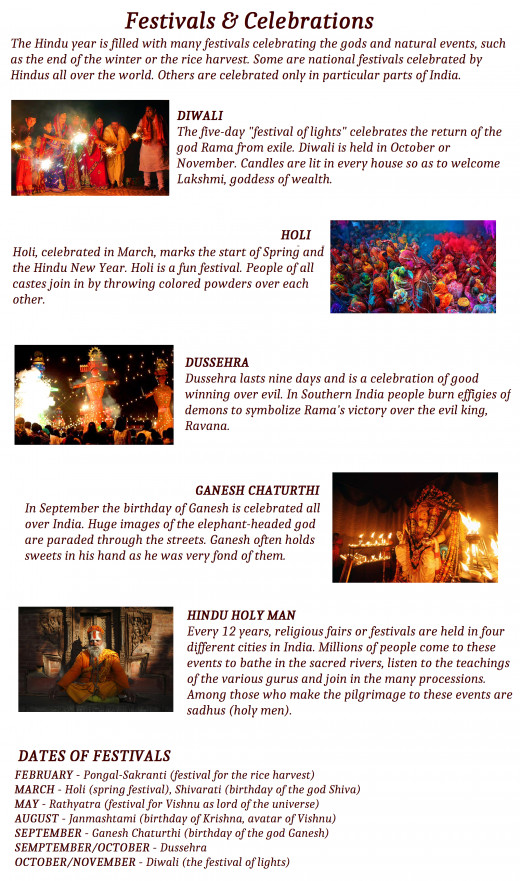
© 2015 Danida

